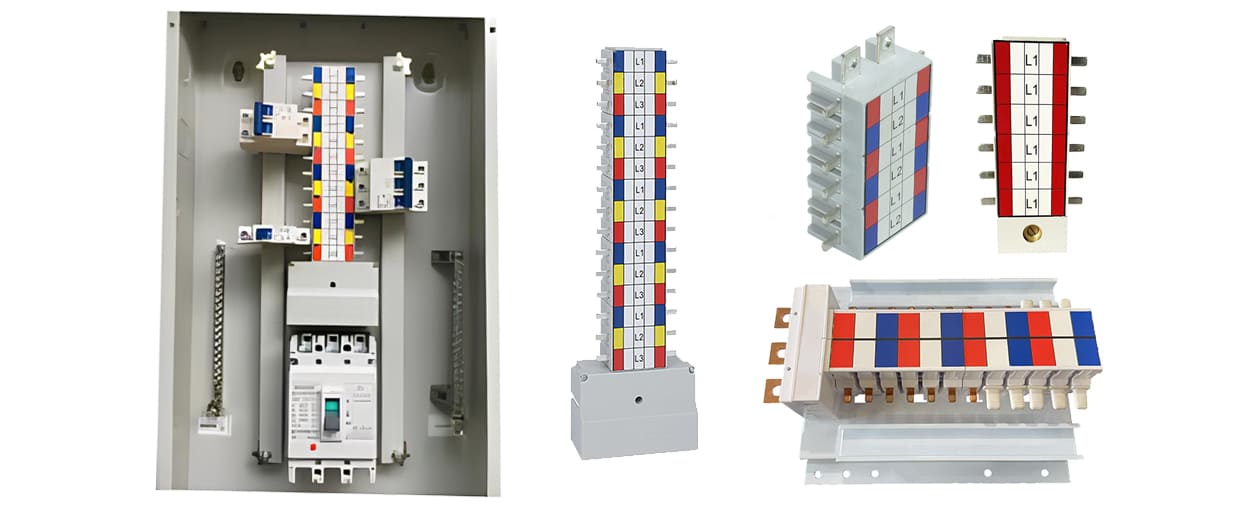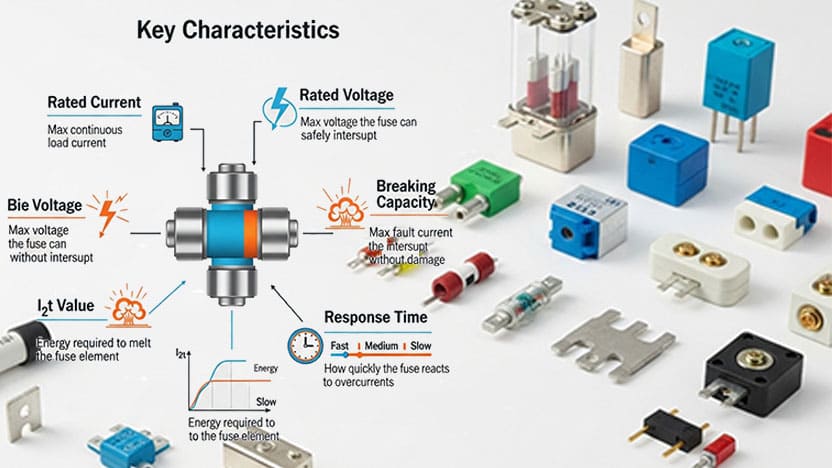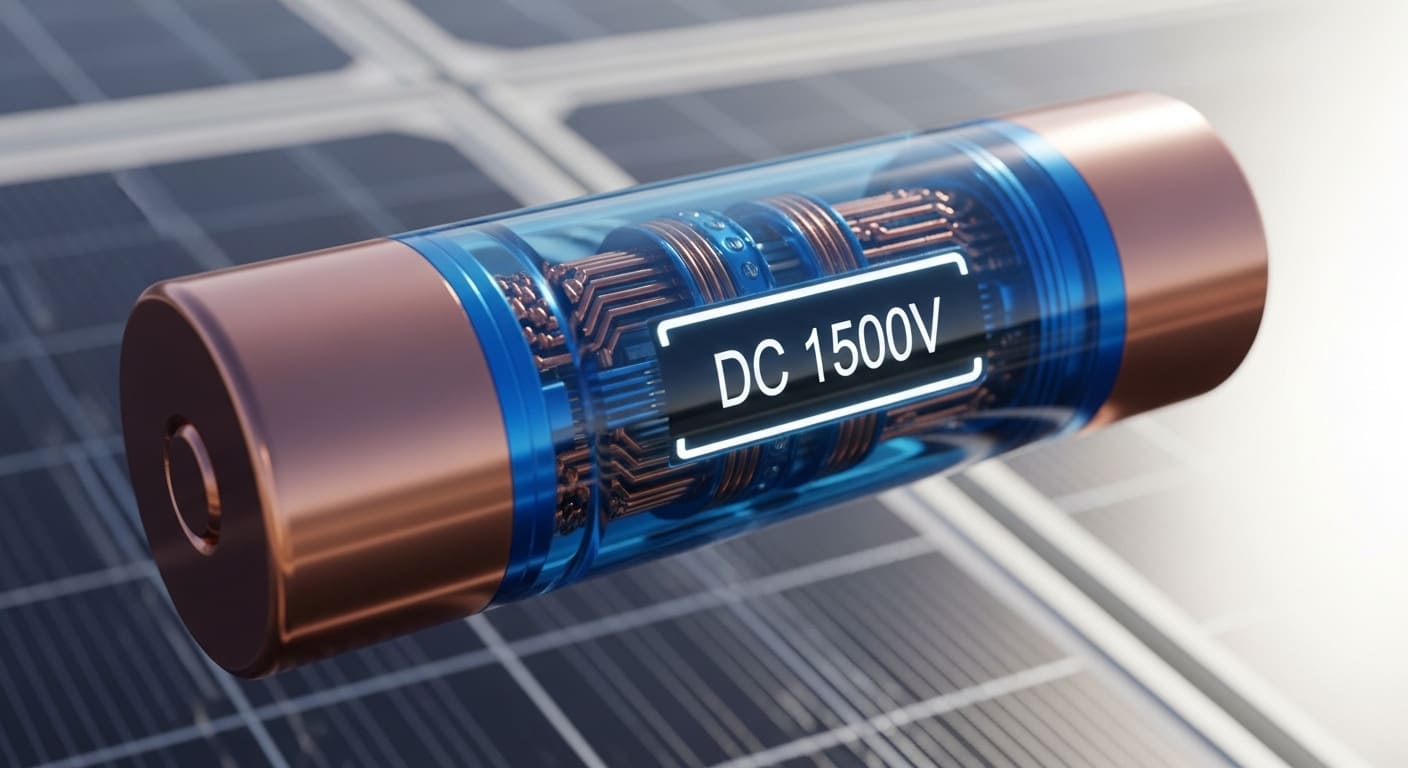Looking at your electrical panel and can't find the main breaker? This common issue leaves many homeowners confused and worried about safety. Without a clear way to shut off all power, how can you protect your home during emergencies?
A home electrical panel might not have a main breaker because it's a split-bus panel (common in 1950s-1970s homes), has a main disconnect located elsewhere, or uses a rule of six design1 with multiple disconnect switches instead of a single main breaker.

Understanding your electrical panel's configuration is essential for both safety and compliance with modern electrical codes2. Let's examine the different scenarios you might be facing and what options you have for upgrading your electrical system.
What If Your Breaker Box Doesn't Have a Main Breaker?
Do you find yourself staring at your electrical panel during an emergency, unsure how to cut power to your entire home? This situation can be both confusing and potentially dangerous when quick action is needed.
If your breaker box lacks a main breaker3, look for a split-bus panel4 design with up to six main disconnects at the top section, or check outside for a separate main disconnect near your meter. In emergencies, you may need to shut off multiple breakers.

Split-bus panels were a common solution before the widespread adoption of main breakers. In these panels, the top section typically contains 4-6 large breakers that act as service disconnects. One of these breakers powers the lower section of the panel where your branch circuits are located.
The National Electrical Code (NEC) historically allowed this "rule of six" design, permitting up to six hand movements to disconnect all power. This meant a panel could have multiple disconnects rather than a single main breaker.
Split-Bus Panel Identification
| Characteristic | How to Identify |
|---|---|
| Panel Age | Typically installed 1950s-1970s |
| Visual Layout | Clear division between upper and lower sections |
| Upper Section | Contains 4-6 large breakers (30-60 amp) |
| Lower Section | Contains numerous smaller branch circuit breakers5 |
| Labeling | Upper breakers may be labeled "Main" or "Lighting Main" |
Alternative Disconnect Locations
If you can't find any main disconnection means inside your panel, check these locations:
- Outside near your electric meter
- In a separate disconnect box on exterior walls
- In utility rooms near where service enters the building
- In multi-family buildings, in a common utility area
Understanding your panel's specific configuration is crucial for safe electrical work and emergency preparedness. If you're uncomfortable with your current setup, consider consulting with a licensed electrician6 to evaluate your system.
Do Some Houses Not Have a Main Breaker?
Have you wondered if your home's electrical setup is unusual or possibly unsafe? The lack of a visible main breaker often raises concerns about whether your electrical system meets modern standards.
Yes, some houses—particularly older homes built before the 1980s—legitimately lack a single main breaker. Instead, they may have split-bus panels with multiple disconnects, separate external main disconnects, or older fuse boxes7 that use different disconnection methods.
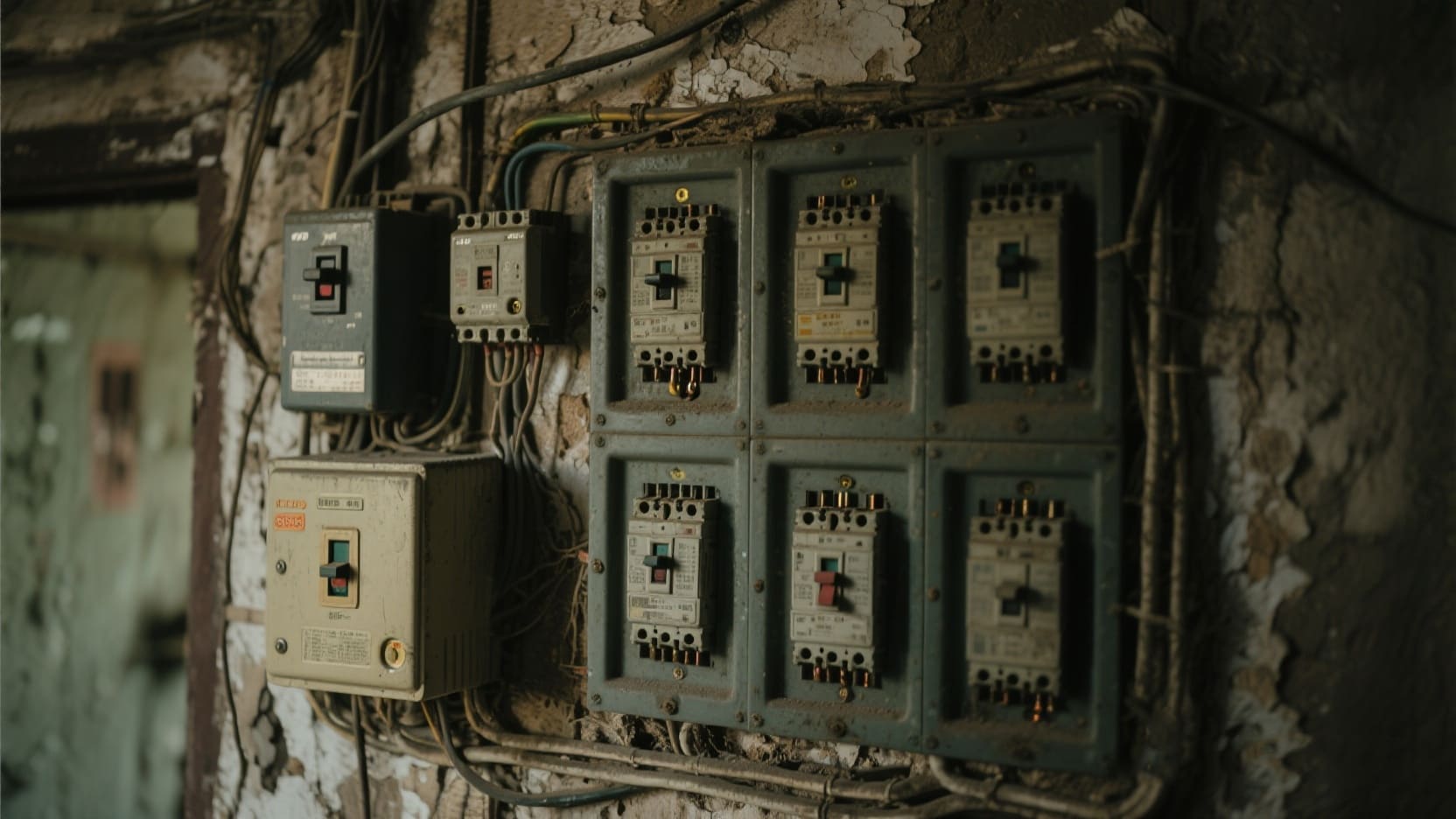
Older electrical systems reflect the standards of their era, and many remain functional despite not meeting current code requirements. These systems generally fall into several categories based on when and how they were installed.
Historical Electrical Panel Types Without Main Breakers
Electrical panel designs have evolved significantly over the decades, with main breakers becoming standard in residential construction relatively recently. Before this standardization, several approaches to power distribution and disconnection existed:
| Era | Typical Configuration | Disconnection Method | Current Status |
|---|---|---|---|
| Pre-1950s | Fuse boxes | Pull-out fuse blocks | Outdated, often needs replacement |
| 1950s-1970s | Split-bus panels | Multiple disconnects (Rule of Six) | Functional but outdated |
| 1960s-1980s | Remote disconnect | Main breaker at meter location | Code-compliant in many jurisdictions |
| 1980s-Present | Main breaker panels | Single main breaker | Current standard |
Many homes with split-bus panel4s have functioned safely for decades. However, these older systems typically offer lower amperage capacity8 (often 60-100 amps) compared to modern homes needing 200+ amps. This capacity limitation becomes problematic with today's higher electrical demands from air conditioning, electric vehicles, and numerous electronic devices.
Additionally, split-bus panels lack the convenience and safety of a single disconnect point during emergencies. This can be particularly concerning when quick power shutdown is needed, such as during floods, fires, or electrical malfunctions. While not inherently dangerous when properly maintained, these older systems represent outdated technology that may warrant upgrading for both safety and convenience.
Can You Add a Main Breaker to an Existing Panel?
Are you worried about the safety of your older electrical panel but concerned about the cost of a complete replacement? The question of retrofitting your existing setup with a main breaker is common among homeowners facing this situation.
While technically possible in some cases, adding a main breaker to an existing panel without one is rarely practical or code-compliant. Most electrical professionals recommend installing a new main breaker panel9 rather than modifying outdated equipment.

Upgrading your electrical panel is a significant decision that affects both safety and functionality. When considering your options, it's important to understand what's involved and why certain approaches are recommended over others.
Main Breaker Retrofitting Challenges
Adding a main breaker to an existing panel presents several technical and regulatory challenges that make it impractical in most situations:
| Challenge | Explanation | Impact |
|---|---|---|
| Panel Design Limitations | Older panels lack the bus bar configuration needed for main breaker installation | Requires extensive internal modification |
| Manufacturer Certification | Modifications may void UL/ETL listings and violate code requirements | Could create liability and insurance issues |
| Service Capacity | Adding a main breaker doesn't address limited amperage capacity of older systems | Doesn't solve underlying capacity problems |
| Bus Bar Compatibility | Main breakers require specific mounting configurations not present in older panels | May be physically impossible without custom parts |
| Code Compliance | Modern codes require specific panel features beyond just a main breaker | Partial upgrades may still leave non-compliant system |
A better approach typically involves installing an external main disconnect ahead of your existing panel or, more commonly, replacing the entire panel with a modern main breaker panel. This comprehensive update provides multiple benefits:
- Increased electrical capacity (typically upgrading to 200A service)
- Modern safety features10 including AFCI/GFCI protection
- Additional circuit spaces for future expansion
- Clear, single-point power disconnection
- Full compliance with current electrical codes
- Potential insurance premium reductions
- Enhanced home value and marketability
While panel replacement11 represents a larger initial investment (typically $1,500-3,000 depending on your location and service size), it resolves multiple issues simultaneously and provides decades of reliable service. Most electricians consider this a better value than attempting to retrofit outdated equipment.
Where Is the Main Breaker on My Panel?
Have you searched your electrical panel for the main shutoff but can't seem to locate it? This common frustration can leave you feeling unprepared for electrical emergencies12.
In standard electrical panels, the main breaker is typically located at the top center or top right position, distinguished by its larger size (usually double-width) and higher amperage rating (100-200A). In older homes, look for multiple disconnect switches or check outside near your meter.
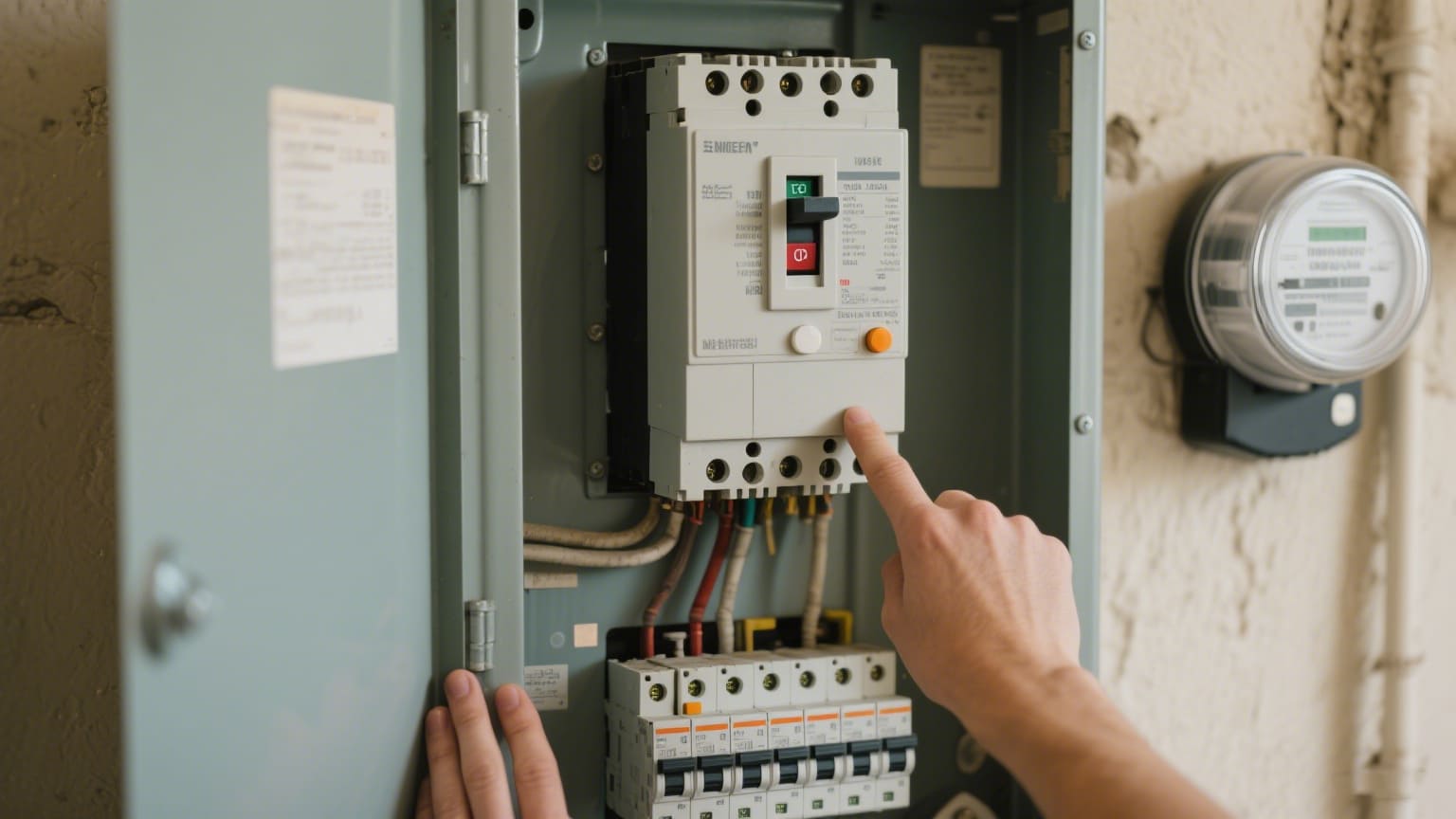
Identifying your main disconnection means is essential for electrical safety. The configuration varies significantly based on your panel's age, manufacturer, and installation type.
Main Breaker Identification Guide
Locating your main breaker (or equivalent disconnection means) depends largely on your panel type. Here's how to identify different configurations:
| Panel Type | Main Disconnection Location | Visual Identification | Amperage Range |
|---|---|---|---|
| Standard Main Breaker Panel | Top position, centered or right side | Largest breaker, usually double-width | 100-400A |
| Split-Bus Panel | Multiple breakers in top section | 4-6 larger breakers at top | 30-60A each |
| Main Lug Only (MLO) Panel | No main in panel, look outside | Panel has direct lugs, no large breaker | N/A (external) |
| Meter-Main Combo | Outside at meter location | Large handle on meter housing | 100-200A |
| Fuse Box | Pull-out fuse block | Cartridge fuses in pull-out block | 60-100A |
When examining your panel, also check for these identifying features:
- Amperage Rating: Main breakers typically show ratings like "100A", "150A" or "200A"
- ON/OFF Markings: Main breakers have clear ON/OFF positions
- Handle Color: Often black or red, sometimes with distinctive coloring
- Connection to Service Lines: Main breakers connect directly to incoming service wires
- Physical Size: Substantially larger than branch circuit breakers
If you've thoroughly checked your panel and still can't locate a main disconnection means, consult with a licensed electrician. Not only can they help identify your current configuration, but they can also advise on whether upgrades are recommended to enhance safety and meet current electrical codes.
Understanding your panel's specific configuration ensures you're prepared to safely manage your electrical system during both routine maintenance and emergency situations.
Conclusion
Understanding your electrical panel's configuration is essential for home safety. Whether you have a split-bus panel, external disconnect, or need an upgrade, knowing how to completely power down your home could prevent disaster during emergencies.
-
Understand the rule of six design and its impact on electrical safety. ↩
-
Stay updated on current electrical codes to ensure your home is compliant. ↩
-
Understand the function of a main breaker and its importance for safety. ↩
-
Learn about split-bus panels, their design, and safety implications for older homes. ↩ ↩
-
Understand the role of branch circuit breakers in your electrical system. ↩
-
Discover the benefits of hiring a licensed electrician for safe electrical upgrades. ↩
-
Explore the differences between fuse boxes and circuit breakers for better safety. ↩
-
Learn about amperage capacity requirements for modern electrical systems. ↩
-
Discover the advantages of upgrading to a main breaker panel for safety. ↩
-
Learn about essential safety features in modern electrical panels. ↩
-
Understand the process and benefits of replacing an outdated electrical panel. ↩
-
Get tips on preparing for electrical emergencies to ensure your safety. ↩


